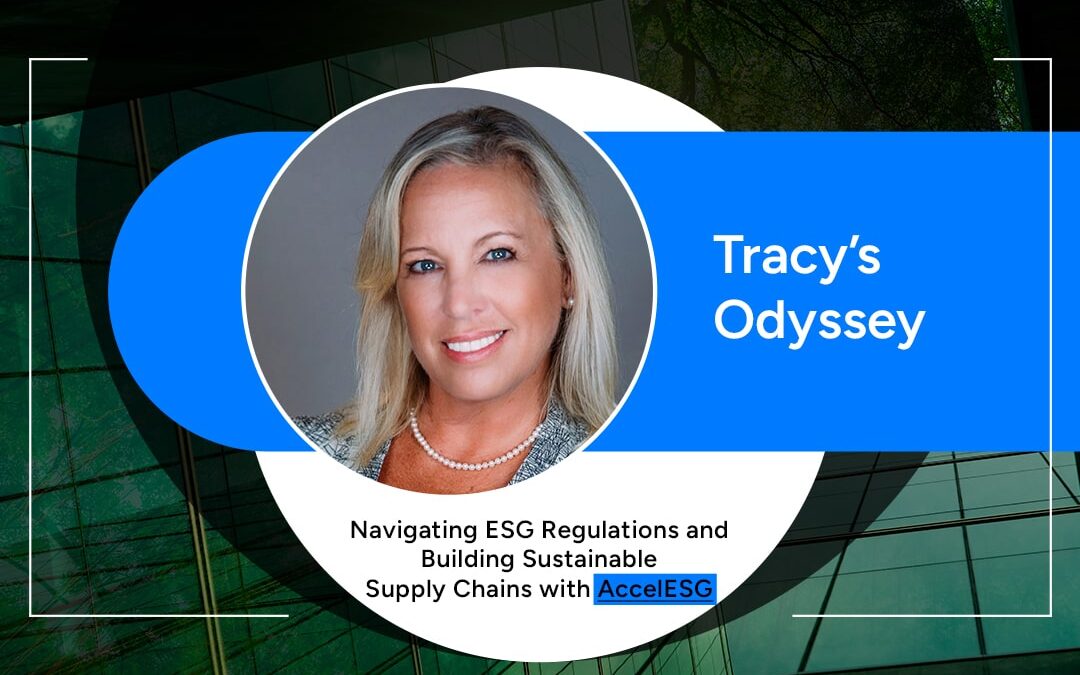A few years ago, I was asked to moderate a Next Generation Oil and Gas panel entitled The Race to Net Zero, which discussed the challenges and opportunities surrounding delivering more clean, reliable, and affordable energy. When polling the participants, the number one internal challenge was related to reporting, which prohibited timely decision-making. In preparation for the session, I embarked on a journey to dig deeper into these challenges and the Environmental, Social, and Governance (ESG) partners who support tackling some of these challenges.
I found that the multitude of ESG metrics, frameworks, and available standards easily confused organizations, making it challenging to navigate and discern meaningful and actionable insights. Moreover, when ESG commitments were extended to supply chains, organizations did not have a clear path forward.
- The regulatory landscape surrounding Environmental, Social, and Governance (ESG) issues is constantly evolving, with new laws, regulations, and reporting standards emerging at both global and local levels.
- Data quality challenges, including incomplete, inaccurate, or unreliable ESG data due to inconsistent data collection methods, limited disclosure, and data gaps, make it difficult for organizations to rely on ESG information for decision-making.
- Many IT services companies lack in-depth understanding and expertise in ESG principles, frameworks, and best practices. This limited knowledge has led to superficial or misguided approaches to ESG integration.
- Despite their limited understanding of ESG, IT services companies may overpromise ESG solutions to clients to capitalize on the growing demand for sustainability initiatives. This can create unrealistic expectations and disappointment when promised outcomes are not achieved.
- In most cases, solutions developed for other business streams have been repurposed to resemble an ESG reporting and strategy tool.
- While numerous software providers offer ESG reporting solutions, many platforms focus primarily on environmental, social, and governance (ESG) metrics related to internal operations and corporate governance. They often lack robust functionality for measuring and managing sustainable supply chains.
Considering the global ESG market is projected to reach $45 billion by 2027 (source: Grand View Research), and that the topic is a high priority for companies aspiring to enhance their brand reputation and build trust with stakeholders, these findings were a bit disheartening.
Embarking on the journey to net zero wasn’t just about finding solutions; it was about unraveling the complexities of ESG regulations and reshaping supply chains for sustainability. Join me as I delve deeper into my quest, navigating the labyrinth of regulations and pioneering sustainable supply chains alongside AccelESG.
Unraveling the Regulatory Maze:
The journey began with a stark realization—the ever-evolving landscape of ESG regulations posed a formidable challenge. From global mandates to local ordinances, navigating this regulatory maze was akin to traversing uncharted territory. The need for clarity and compliance was palpable, driving our resolve to seek solutions that would streamline reporting and ensure adherence to regulations.
The AccelESG Difference:
In March 2023, fate intervened in the form of AccelESG—a beacon of innovation in the realm of sustainability. Led by the visionary leadership, AccelESG set out to revolutionize ESG integration with a suite of groundbreaking solutions. AccelTRACK, AccelSUPPLY, and AccelGAP emerged as pillars of our quest, offering not just compliance, but empowerment in the face of regulatory uncertainty.
Empowering Sustainable Supply Chains:
But our journey didn’t stop at compliance—it extended to the very heart of sustainability: the supply chain. Recognizing the pivotal role of supply chains in achieving net zero emissions, we embarked on a mission to transform them into engines of sustainability. AccelSUPPLY became our ally, empowering businesses to capture, analyze, and optimize their supply chain data for maximum sustainability impact.
Navigating the Regulatory Landscape:
As we traversed the regulatory landscape, we encountered a myriad of challenges—from data quality issues to the limited understanding of ESG principles. But with each challenge came opportunity. We forged partnerships, invested in technology, and fostered a culture of innovation to overcome these obstacles, emerging stronger and more resilient than before.
The AccelESG Promise:
Today, AccelESG stands as a testament to our collective vision—a vision of a world where sustainability is not just a mandate, but a way of life. With AccelTRACK ensuring compliance, AccelSUPPLY optimizing supply chains, and AccelGAP integrating ESG factors into risk assessment, we have laid the foundation for a more sustainable future.
Looking Ahead with GreenSTAR:
But our journey is far from over. With the launch of GreenSTAR on the horizon, we are poised to usher in a new era of sustainability. GreenSTAR promises to push the boundaries of innovation even further, offering unprecedented insights and capabilities to businesses striving for sustainability excellence.
Conclusion:
As I reflect on our journey, I am filled with a sense of pride and gratitude. Together, we have navigated the regulatory maze, transformed supply chains, and paved the way for a more sustainable future. With AccelESG by our side, the possibilities are endless. Together, we will continue to push the boundaries of sustainability, one regulation at a time.

In Tracy’s own words,
“The journey to net zero may be fraught with challenges, but with AccelESG leading the way, the destination is within reach.”

